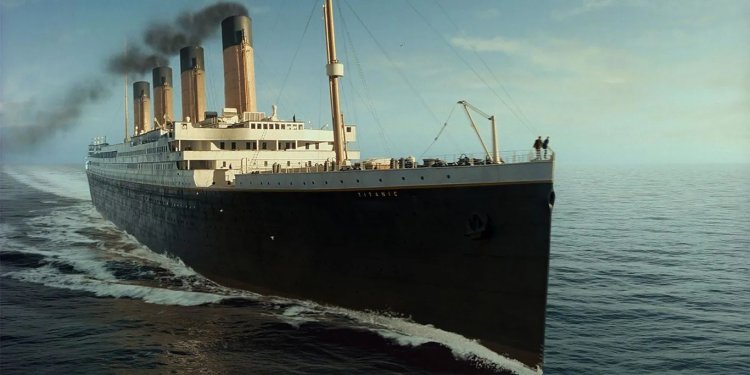A novel predicted the sinking of the Titanic 14 years before the incident
A story in 1898 about an imaginary disaster that in 1912 turned into completely real with most of its details

There is more than one piece of evidence that the Titanic sank twice: one in 1912, killing 1,517 people, and two weeks later marking 100 years since its real disaster, and one that “sinked” in a short story by an obscure American writer that was on bookstore shelves 14 years before the Titanic’s voyage. Which ended in what was and still is the largest civil disaster known to the seas of the twentieth century. Of course, I did not stop at this news, which was old and repeated over decades, until I made an effort to confirm its authenticity and that the story, its details, and the date of its publication were not fabrication for the purpose of marketing, but rather a fact supported by documents, the most important of which is that newspapers wrote about it when it published 16 chapters. On 33 pages in 1898 in New York. Also, original copies of it exist to this day with the date of its publication on it, which raised questions that led me to search for an explanation from an expert in psychological affairs. The most important questions: Was the American writer, Morgan Robertson, whose story I came to know by chance when I was collecting information about “Titanic,” living when he wrote it in a rare psychological state that allowed him, from what he did not know, to move between the present and the future to write a fictional story about a disaster that turned... After 14 years, is it real with the ill-fated Titanic?
Most of what happened in reality happened before in imagination The story written by Morgan is The Wreck of the Titan, or “The Wreck of the Titan,” which talks about a giant ship that he described from the first page as “unsinkable” because of its huge size. It collided with an iceberg in the North Atlantic Ocean, sinking with most of the passengers on board, and this is what happened. With "Titanic" exactly 100 years ago and more. To summarize, I have compared what happened in reality and what happened in imagination between the ship Morgan, which sailed in the story from New York to the city of Liverpool, England, and the voyage was its third since its inauguration, and the “Titanic”, which sailed in reverse, that is, from the port of “Southampton” in southern England to New York, which was her first and last trip. "Titan" was 245 meters long and weighed 45,000 tons, and "Titanic" was 269 meters long and weighed 46,000 tons. The Titan had a power of 40,000 horsepower and had 15 watertight seals, while the 46,000 horsepower Titanic had 9 seals. As for the speed, it was 25 knots for the Titan, which had two masts and 3 propellers, and 24 for the Titanic, which also had the same thing. The similarity between the two ships also included the cases of panic that arose among the passengers as they faced their death, in addition to the fact that the month in which the “Titan” sank, whose name is somewhat similar to the name “Titanic,” was April, which is the month in which the “Titanic” also sank. The cause of the collision with the iceberg was the excessive speed of the two ships, which lost a large number of passengers because there were not enough boats to escape. Did the writer of "Titan Wreck" die by suicide? Dr. Ahmed Okasha, founder of the Okasha Center for Psychiatry at Ain Shams University in Cairo and president of the Egyptian Psychiatric Association, says that there is no explanation for what he called “the ability of some people to be aware of the future,” which is a power they have, but it is difficult to provide evidence for it. He stated that there are psychology laboratories in Russia and the United States that conduct research on people who have special abilities in anticipating the future, “but it is difficult for them to teach it to others.” Dr. Okasha talked about what he called “cosmic awareness” that exists among some people, “which is a world in which there is neither present nor future,” and that the author of the story “The Wreck of Titan” may have been one of them, and when he wrote about an imaginary catastrophe in his story, he provided details that he derived from that awareness and were automatically realized in others. Years later, “these are abilities that psychology acknowledges exist,” he said.
It seems that the writer Morgan Robertson was suffering from epilepsy, which is also common among many celebrities throughout history, because he was taking doses of Paraldehyde solution used to treat the disease.
They write that because he took a large dose of it, he died in his room in a hotel where he was staying in New Jersey. He died in 1915 at the age of 53 years, that is, 3 years after the real sinking of the largest ship built by man. Did the writer of “Titan’s Wreck” feel some kind of guilt with the “Titanic” disaster? So he got rid of his psychological torment and committed suicide?
What's Your Reaction?






















